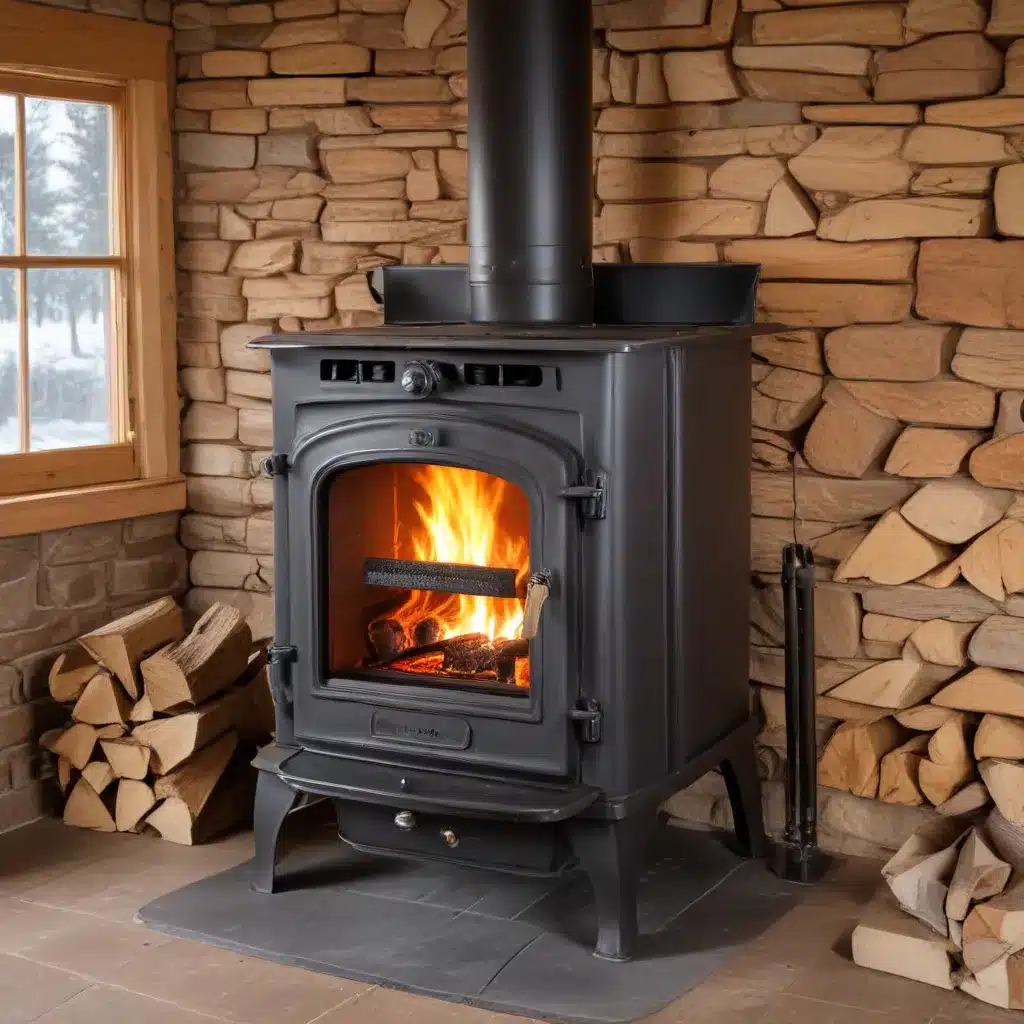
Unlocking the Secrets to Maximizing Wood Stove Performance
For centuries, wood stoves have provided a reliable and cozy source of heat for homes. However, with advancements in technology, modern wood stoves have evolved into highly efficient and environmentally-friendly heating solutions. As a seasoned expert in the field of wood stoves and heating systems, I’m here to share practical insights and in-depth guidance on optimizing wood stove efficiency while ensuring compliance with safety standards and regulations.
Understanding Wood Stove Temperatures and Safety
One of the critical aspects of wood stove operation is maintaining the appropriate temperature ranges across the various components. The surface temperature of the wood stove should be kept below 200-300°F (93-149°C) to prevent accidental ignition of nearby combustible materials. The Torch Guys emphasizes the importance of adhering to manufacturer-recommended clearance distances, as these guidelines are based on the expected surface temperatures during operation.
The flue, or exhaust pipe, temperature is another crucial factor to monitor, with the ideal range typically between 300-600°F (149-316°C). Temperatures below this range can lead to the buildup of creosote, a hazardous byproduct of incomplete combustion, while excessively high temperatures may indicate overheating or excessive draft. Using a flue thermometer can help you maintain the flue temperature within the optimal range, allowing for efficient combustion and minimizing the risk of chimney fires.
At the heart of the wood stove, the firebox experiences the highest temperatures, which can reach 800-1200°F (427-649°C) or more, depending on the stove’s design and the quality of the fuel used. These high temperatures contribute to efficient and complete combustion, maximizing heat output while minimizing emissions. However, it’s crucial to be aware of these extreme temperatures and take appropriate safety measures to protect both the stove and the surrounding environment.
Selecting the Right Wood Stove and Fuel
The type of wood stove you choose can significantly impact its efficiency and overall performance. When shopping for a wood stove, look for models that are EPA-certified, as they meet stringent emissions standards and incorporate advanced combustion technologies. These stoves often utilize features like secondary and tertiary burn systems, which maximize heat output while minimizing smoke and particulate emissions.
Equally important is the choice of fuel. Hardwoods, such as oak, maple, and ash, are generally the best option as they burn hotter and more consistently than softwoods like pine or fir. Properly seasoned wood, with a moisture content below 20%, ensures efficient combustion and optimizes the heat output of your wood stove. Investing in a moisture meter can help you assess the dryness of your firewood, allowing you to make informed decisions about the fuel you use.
Ensuring Proper Installation and Maintenance
Proper installation of a wood stove is crucial for both safety and efficiency. It’s highly recommended to hire a professional installer who can assess your specific needs, ensure compliance with local building codes, and properly configure the stove’s ventilation system. Inadequate ventilation can lead to dangerous situations, such as the buildup of carbon monoxide or the risk of chimney fires.
Regular maintenance is also essential for maintaining optimal wood stove performance. This includes cleaning the chimney and flue system to prevent the accumulation of creosote, removing ash from the firebox, and inspecting the gaskets around the door and air inlets to maintain an airtight seal. Addressing any wear or damage to these components can help ensure efficient combustion and prevent potential safety hazards.
Achieving Consistent Heat Distribution
Uneven heat distribution is a common challenge with wood stoves, as some areas of your living space may feel too hot while others remain cold. To address this issue, consider factors such as stove placement, air circulation, and insulation levels in your home.
Rearranging furniture or installing a heat distribution system, such as a blower or ductwork, can help circulate the warm air more evenly throughout your living space. Additionally, improving insulation in colder areas can prevent heat loss and promote a more consistent temperature.
Compliance and Regulatory Considerations
In the United States, the Environmental Protection Agency (EPA) has established strict standards and certification requirements for wood stoves to limit particle emissions and improve air quality. When selecting a wood stove, prioritize EPA-certified models, as they are designed to burn more efficiently and produce fewer pollutants.
Beyond EPA standards, it’s crucial to comply with local building codes and regulations regarding the installation and operation of wood stoves. These codes may specify requirements for clearance distances, ventilation, and chimney specifications based on the specific characteristics of your stove and local climate conditions. Consulting with local authorities or hiring a professional installer can ensure your wood stove is installed and operated in accordance with all applicable codes and regulations, minimizing the risk of fines or legal consequences.
Optimizing Efficiency and Sustainability
By prioritizing the factors discussed in this article, you can achieve optimal wood stove efficiency while ensuring compliance with safety standards and environmental regulations. From selecting the right wood stove and fuel to maintaining proper installation and performing regular upkeep, these strategies will help you maximize the performance and longevity of your heating system.
Moreover, consider the broader environmental impact of your wood stove. Look for models that meet or exceed EPA emissions standards, as they are designed to burn cleaner and more efficiently, reducing your carbon footprint. Additionally, explore the use of sustainably sourced firewood, further contributing to a greener and more sustainable heating solution.
Remember, a well-maintained and properly operated wood stove not only provides reliable and efficient heating but also adds a cozy, rustic charm to your living space. By following the guidance outlined in this article, you can enjoy the warmth and ambiance of your wood stove while ensuring the safety and environmental responsibility of your home heating system.
For more information on wood stove maintenance, fireplace services, or to find a professional to assist with your heating needs, visit https://woodstoveheaters.com/. Our team of experts is ready to help you optimize your wood stove’s performance and keep your home warm and comfortable throughout the winter months.


